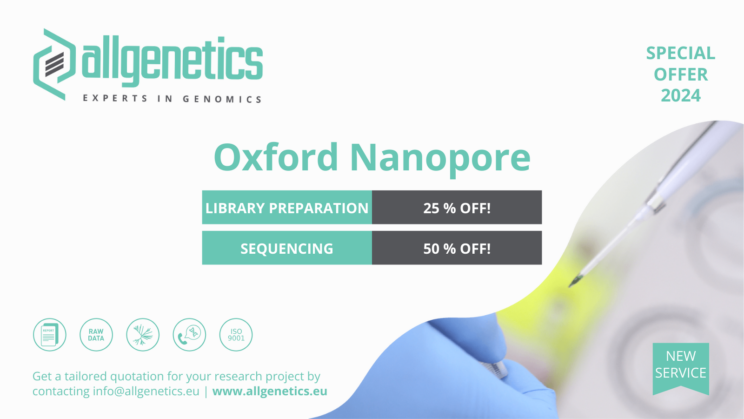Nanopore sequencing, the new long-read high-throughput sequencing technology developed by Oxford Nanopore Technologies, is revolutionising the way genetic information is extracted.

You might have already heard from the new long-read sequencing technology developed by Oxford Nanopore Technologies as one of its devices, the MinION, is becoming very popular in universities and research centrers. The truth is that long-read Nanopore sequencing (even though it requires extensive optimisation during wet-lab protocols) is proving really useful in providing services to the environmental or the agrifood fields. Remarkably, at AllGenetics we have successfully introduced Nanopore sequencing into our pipelines.
In contrast to short-read sequencing technologies (e.g. Illumina) Nanopore offers an extensive diversity of read lengths, spanning from short to ultra-long sequencing, potentially reaching the megabase range.
But how does it actually work? The core principle involves threading DNA strands through nanometer-sized pores and measuring changes in electrical current as individual nucleotides pass through these pores. This real-time, single-molecule sequencing technology has immense potential across diverse fields.
For example, in the food industry, Nanopore sequencing can be used in pathogen detection, traceability, authentication and labelling, raw ingredient monitoring, etc., at a pace and scale that is unmatched by any other current high-throughput sequencing technologies.
It also offers numerous applications in the fields of agriculture and farming, having the potential to provide the necessary data for enhancing crop production, soil health assessment, crop disease diagnostics, or pest management, just to name a few.
Moreover, Nanopore sequencing is one of the few technologies that allows for native methylation detection, meaning that there is no more need for tedious and bias-prone bisulphite conversion. This, coupled with Nanopore’s ability for direct RNA sequencing, which eliminates the need for cDNA conversion, makes the study of gene expression and regulatory mechanisms a lot more straightforward, robust, and bias-free than ever.
Additionally, taking advantage of the long-sequencing reads that Nanopore offers, it is possible to detect structural variants in the DNA, full length transposable elements, repetitive genomic sequences, RNA splicing variants, and so on.
As this technology continues to evolve and become more accessible, we can anticipate even more breakthroughs in understanding our environment, improving agriculture, and advancing our knowledge in the life sciences.
At AllGenetics, as a major player in the European biotech market, we are committed to incorporating innovative technologies into our portfolio. In this regard, Nanopore is a notable addition to our genomic services package. This technology will play a significant role in our services, especially for the environmental field and the agrifood industries, by providing a broader range of sequencing options.